 |  |
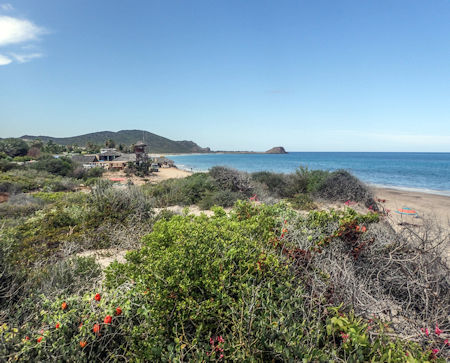
My friend and I pack the car, excited by the reports of clear blue waters down at Cabo Pulmo. The naturally occurring green waters that affect visibility here from December through mid-summer have finally cleared up and it is once again considered prime time for diving and snorkelling. But this isn’t just a regular beach trip. Our primary purpose is to learn more about the catalogue of events that led to Cabo Pulmo placing itself on the map as being one of the world’s most successful marine conservation stories of all time.
Cabo Pulmo National Park is a national marine park spanning just in excess of 70 square kilometres. It is situated on the south-east coast of the Baja California peninsula in the Sea of Cortez between Los Cabos and La Paz in Mexico. The drive from Cabo San Lucas is close to two hours whilst from La Paz is around three. Care should be exercised on this windy highway that passes through the foothills of the Sierra de La Laguna, the southern-most mountain range on the Baja peninsula. It’s good to note that the highway is continually utilised by free-roaming cattle as they graze at the roadside, largely inattentive to passing traffic. Regardless of whether you approach Cabo Pulmo from the north or south, the final 10 kilometres or so is unpaved washboard but will grant any regular two-wheel drive vehicle a safe passage in normal conditions.
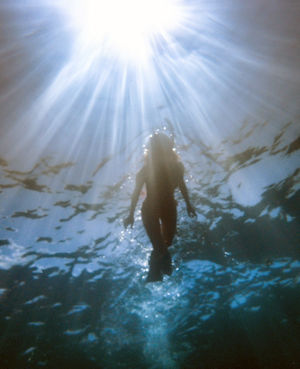
The white sandy beach has a relatively steep slope which backs up to sand dunes that run parallel with much of the bay’s edge. The dune flora which holds the dunes themselves in place sway in the soft off-shore breeze whilst enduring the intense heat of the summer sun. The ocean exhibits the gradients of blues and greens idiosyncratic of the Sea of Cortez. Each of the one or two foot high waves, probable products of distant winds, beat and slap rhythmically against the steep slant of the beach and on the high-tide line driftwood sticks stand proud in the sand.
Today, Cabo Pulmo is home to one of the most biodiverse and complex areas in the entire Mexican Pacific including the Gulf of California. Once just a small fishing village, the amazing biodiversity and biomass of this protected area attracts visitors from all over the world to experience its relative remoteness and bounty of marine life. One of the main marine attractions of Cabo Pulmo for divers and snorkelers alike is the huge school of tens of thousands of bigeye jack trevallies (Caranx sexfasciatus) that can often be found just offshore. Perhaps the greatest attraction of all is the visitation of migratory bull sharks (Carcharhinus leucas) that can sometimes be encountered around a shipwreck known as El Vencedor, a tuna trawler that ironically started a new life as an artificial reef after colliding with the natural coral reef in the early 80’s. The National Park itself functions as a refuge area, feeding grounds and a reproduction and nurturing area for numerous marine organisms. Of the 14 different coral species described in the Gulf of California, 11 of them can be found here. However, prior to this state of abundance and diversity, the area was subject to severe over-fishing throughout the 1980’s and early 90’s. Over time, the increasing struggles of the local fishermen to find enough fish confirmed the collapse of the fishing industry and the need to shift to an alternative economy.
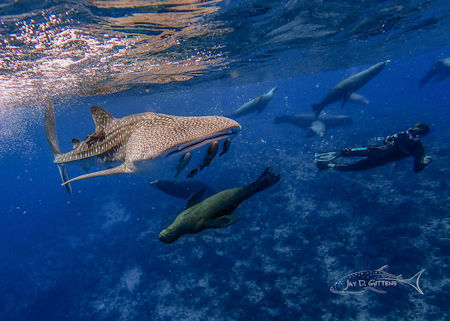
The conservation story of Cabo Pulmo begins somewhere in the early 90’s when a man by the name of Mario Castro moved to Cabo San Lucas in search of an alternative income for himself, his family and the Cabo Pulmo community. Having considered all of his options, Mario decided he would complete the necessary training to become a recreational scuba diving professional and once trained, he would attract scuba divers and snorkelers to his hometown. This decision would later change the fate of Cabo Pulmo, transforming it from a depleted commercial fishing zone to what is now Cabo Pulmo National Park, a world-class diving destination.
Having completed his training, Mario returned to Cabo Pulmo and started bringing clients. Meanwhile, community members met and agreed a pact to cease all fishing activities and make the transition to non-extractive use of the marine resources through ecotourism. The community managed organisation, “Amigos para la Conservación de Cabo Pulmo”, followed later as a result. Word-of-mouth did its thing and very quickly people were visiting Cabo Pulmo to dive and snorkel on the recovering reefs bringing with them tourism dollars and work for the ex-fishermen, now tour boat captains and guides. BNB’s soon popped up to house the increasing influx of ocean-lovers and several restaurants came to be. Fishing boats were repainted and adapted to join the growing fleet of dive boats. More community members became dive professionals, opening their own businesses as a result.
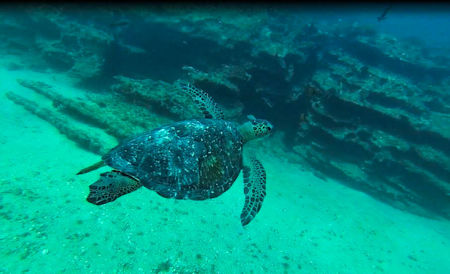
Finally, in 1995, Cabo Pulmo was declared a National Park under the leadership of Mexican President Ernesto Zedillo. In 2005 Cabo Pulmo became a UNESCO World Heritage Site. A management plan was later introduced in 2009 in response to the ever growing tourism. With protection came monitoring so that the success of the park could be scientifically qualified and quantified. The Castro family worked with researcher Octavio Avurto of Scripps University in San Diego. Astonishingly after just ten years of protection, the biomass of Cabo Pulmo increased by a staggering 420%. Now after more than 20 years of protection, it is widely considered to be one of the globe’s most successful reef ecosystem restoration initiatives of all time and is hope for the future of the world’s oceans.
Cabo Pulmo is an excellent destination for any nature lover and is family and pet friendly. When visiting Cabo Pulmo, or any other coastal location, it’s important not to leave anything behind, except, of course, for your footprints. Just because a beach has garbage cans, it doesn’t mean we have to use them. At busy times the cans become so full that they overflow. Wild animals such as coyotes and badgers, and also stray dogs, tip the cans over in search of food and the remaining plastic waste threatens our marine life and ultimately our own. For this reason it is way better for the environment to take your trash home and ensure it is properly recycled where possible.
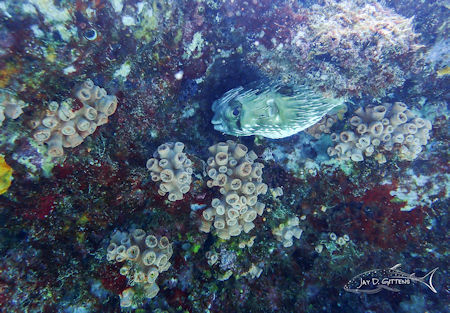
For further information about Cabo Pulmo National Park, you may view the website of “Amigos para la Conservación de Cabo Pulmo”.

Great insurance policy experience for our Mexico travels

Great renewal process, if only south Dakota would do the same for car registration.

Baja Bound is #1. They make getting Baja Mexico insurance a pleasure.